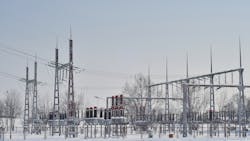As the United States grappled with extreme winter conditions, Texas particularly, faced a fiasco when the Electric Reliability Council of Texas (ERCOT) called for rotating outages as it "entered emergency conditions and initiated rotating outages" on Feb. 15.
According to a Bloomberg report, "millions more were plunged into frozen darkness." The forced blackout was the result of a systemic and multifaceted failure.
Extreme weather conditions caused many generating units – across fuel types – to trip offline and become unavailable. According to the Department of Energy, as of 10:30 AM EST, February 16, ERCOT had declared Energy Emergency Alert (EEA) Level 3 due to operating reserves falling below the required minimum as high demands related to ongoing severe winter weather event exceeded available generation capacity. Generation resources are strained due to cold weather tripping units, natural gas supply curtailments,and wind power generation outages. ERCOT instructed utilities to shed firm load and implement controlled outages. As of 10:45 AM EST, Feb. 16, there were approximately 4.5 million outages in Texas.
Still, many questions linger. Bloomberg reported that power plants weren’t fully weatherized, wiping out generation capacity. The ones that were still standing struggled to get enough fuel, with shale wells experiencing so-called freeze-offs. Many wind turbines stopped spinning. Texas, with a grid notoriously isolated from the rest of the U.S., was unable to call on neighboring states for help.
Still, as the pressure dropped last week and frigid air descended from the north, Bloomberg stated, some saw what was coming and felt like they were witnessing a train crash. They lay part of the blame on ERCOT, which said the extreme nature of the weather made it hard to be ready.
The Bloomberg article goes on to quote several sources, one stating that there were spare megawatts that weren't brought online; and another claiming that ERCOT's own projections showed too little supply to meet soaring demand.
A lot of accusations and blame are flying around; FERC and NERC announced yesterday that will open a joint inquiry into the operations of the bulk-power system during the extreme winter weather conditions currently being experienced by the Midwest and South central states.
For the full Bloomberg article, see "In Texas’s Black-Swan Blackout, Everything Went Wrong at Once..."
About the Author
Nikki Chandler
Group Editorial Director, Energy
Nikki is Group Editorial Director of the Endeavor Business Media Energy group that includes T&D World, EnergyTech and Microgrid Knowledge media brands. She has 29 years of experience as an award-winning business-to-business editor, with 24 years of it covering the electric utility industry. She started out as an editorial intern with T&D World while finishing her degree, then joined Mobile Radio Technology and RF Design magazines. She returned to T&D World as an online editor in 2002. She has contributed to several publications over the past 25 years, including Waste Age, Wireless Review, Power Electronics Technology, and Arkansas Times. She graduated Phi Beta Kappa with a B.S. in journalism from the University of Kansas.

